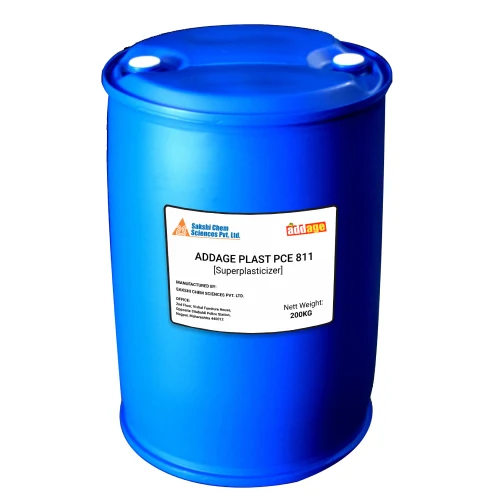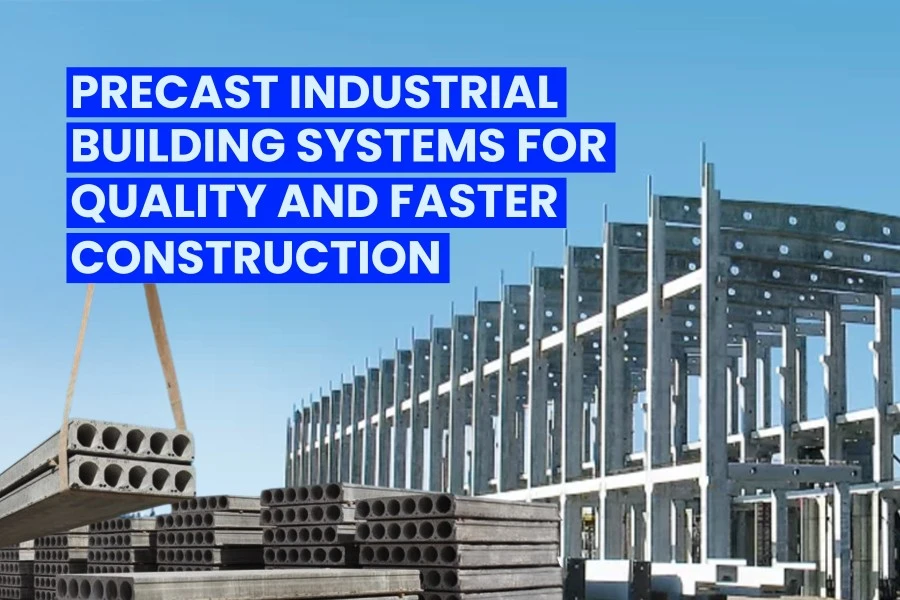Introduction
In today’s industrial world of “speed” and “quality”, construction projects on a major scale require speed and quality; as we all know, delay can be costly, and inconsistencies in the quality of structures can lead to safety and performance concerns.
This is where Precast Industrial Building Systems come in. Precast building systems offer a more intelligent way of building, as much of the work comes out of a controlled factory environment.
This company can save you time on project duration, it can increase quality control, and can reduce headaches on-site.
Table of Contents
Precast systems are now used to build many things, whether that be a monster-sized warehouse, production plant, or factory, with speed, strength, and reliability.
Let’s take a moment to explain what exactly these precast building systems are, how they work, and why they are transforming the construction of industrial buildings.
What is a Precast Building System?
Precast Building Systems is a relatively new way of building called potentially smart construction, where structural systems like foundations, walls, columns, beams, and slabs are manufactured in a factory.
Not only are these structures invented in a factory, but the workers can build them all in a controlled environment with a higher level of predictability. When the systems are done, they are delivered to the construction site and assembled (think of it like building with blocks).
This is different from the traditional way of constructing a building, where each component is built on a construction site (or, in the case of time-sensitive construction, skipping the quality).
When you choose precast, you are choosing guidance from factory-made standardized parts that assemble properly together and provide durability. This process improvement is crucial, as it not only increases speed but also improves overall efficiency and structural integrity.
Process: How Precast Building is Done
Design & Planning: Engineers construct the structure and decompose it into modular precast parts. Each part is precisely designed.
Casting: The parts are cast in steel or wooden moulds in a precast factory. Mould Release Agents are used to release the parts with a smooth surface and no damage.
Use Superplasticizers: Superplasticizers are another category of chemical additives added to concrete to allow for more flow of concrete without losing its overall strength. They help to decrease the amount of water used, along with improvingthe quality of the final concrete.
Curing & Finishing: The parts are cured under ideal conditions to make them even stronger and durable. Finishes are applied to further enhance appearance with respect to aesthetic and functional performance.
Transportation: Once they are ready to go, the elements are transported to the site with heavy-duty trucks or trailers.
Installation: Cranes (and other lifts) are used to pick up each precast element and set it in their designated location, secure the connections, and put the structure together in record time.
Benefits of Precast in Industrial construction
Faster Project Completion: Since the parts are assembled in parallel with the site construction procedures, precast can greatly decrease project schedules. You no longer must wait until one stage is completed before commencing the other.
Increased Quality Control: Every product made in the designed factory is closely monitored. From the mixing of the concrete, the curing, and the finish, all processes are monitored ensuring quality control is consistent.
Reduced Dependency on On-Site Labor: Many construction problems stem from labor shortages or a lack of skilled labor. Using precast reduces on-site labor by doing much of the work off-site.
Savings in Cost: Although the initial cost for precast is high, you will save money during construction due to the reduced cost of labor, waste, re-work, and time to completion, which usually creates favorable economic factors.
Cleaner, Safer Sites: Reduced construction on-site means fewer safety hazards, dust, noise, and pollution on-site.
Robustness in Harsh Environments: Precast structures withstand marine and rain-rich environments, whereas traditional structures decompose from tide corrosion, wave damage, and water decomposing marine materials into structures.
Eco-Friendly Approach: With less material waste, reusable moulds, and better cement optimization using additives like Superplasticizers, precast systems contribute to greener construction.

Precast vs Conventional Construction
| Feature | Precast Industrial Building Systems | Conventional Construction |
| Speed | Much faster | Slower due to sequential processes |
| Quality Control | High (factory-controlled) | Variable (site-dependent) |
| Labor Requirement | Lower on-site labor | High on-site labor |
| Durability | More resistant to weather & corrosion | May require more maintenance |
| Safety | Safer, less on-site work | Higher risk due to active site work |
| Cost | Higher upfront, better long-term value | Lower upfront, potentially higher long-term cost |
Challenges to Adoption
While precast certainly has its advantages, there are still a few issues that are keeping precast from more widespread usage.
Costs: The capital expenditure required to set up a precast plant and the logistics are significant. Not all areas offer easy and quick access to precast facilities.
Transportation and handling: Large precast elements are bulky and cumbersome to handle and transport. The roads and access at the site must be prepared for transport and handling.
Design Factors: Precast is versatile for sure; however, dealing with highly customized designs, without additional expense, may prove impossible.
Skill in Planning: For precast to work as designed, you must plan better in the early stages of a project. Failure in communication, coordination, and planning to make modifications later in the project can delay the project.
Awareness and Training: In many parts of North America engineers, architects, and contractors are still more familiar with time-honored practices. There is a need for introducing training and building awareness and knowledge.
Conclusion
The way of the future of industrial construction will rely on Precast Industrial Building Systems. With the ability to provide quicker delivery to the market, strength, safety, and long-term value, they are an ideal solution to modern industrial infrastructure.
From foundations to rooftops, these manufactured factory elements are solving many site-based problems, lessening reliance on labour, and offering a level of uniformity of construction beyond a construction location.
While problems still exist in delivering quality concrete with innovations such as Superplasticizers and prolonging the slickness of the casting through the use of Mould Release Agents, not many conventional ways can establish this level of precision in material taken from a jobsite or have a readily pliable form of polish.
As awareness grows and technology improves, precast systems are likely to become the new normal for industrial building projects across the country.
Sagar Telrandhe is a Construction Engineer with a B.Tech in Construction Engineering & Management. Passionate about infrastructure development, project planning, and sustainable construction, he specializes in modern construction techniques, project execution, and quality management, contributing to efficient and innovative building.


